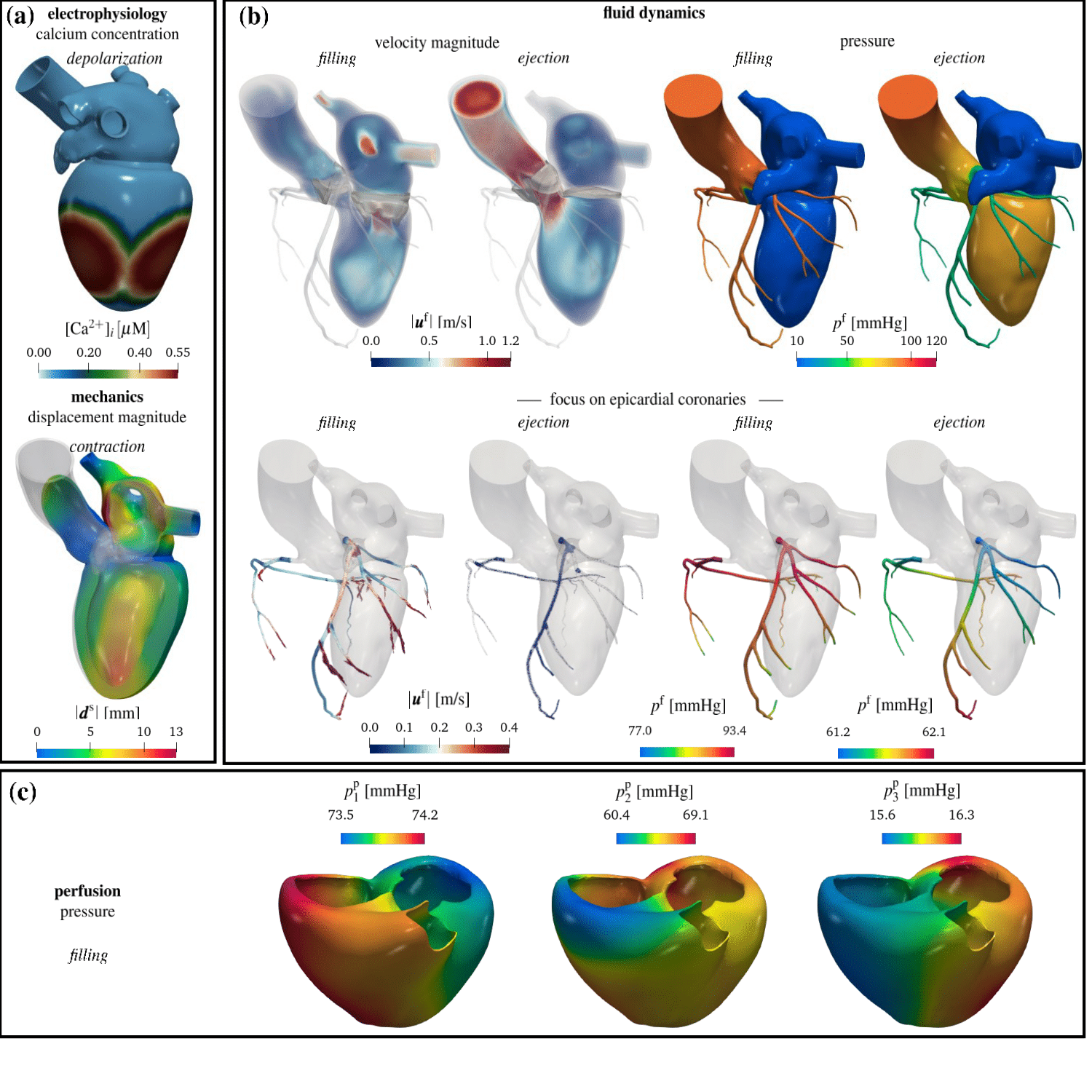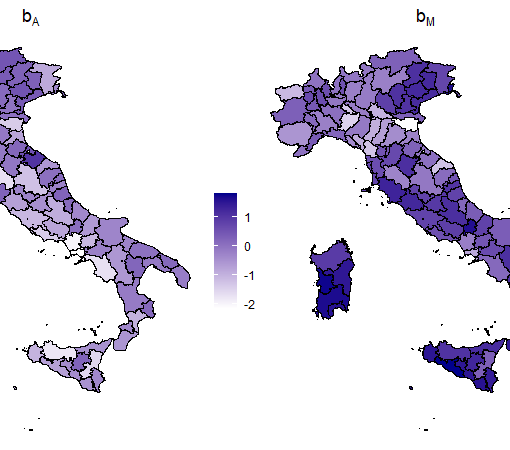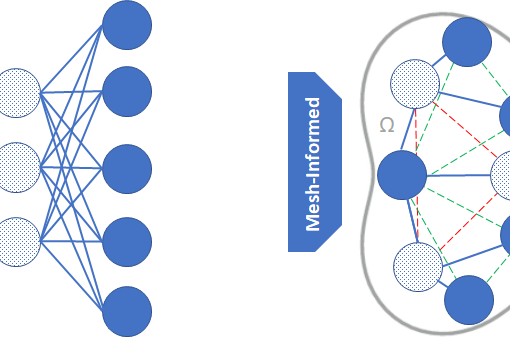A new MOX report entitled “A comprehensive mathematical model for myocardial perfusion” by Zingaro, A.; Vergara, C.; Dede’, L.; Regazzoni, F.; Quarteroni, A. has appeared in the MOX Report Collection.
The report can be donwloaded at the following link:
https://www.mate.polimi.it/biblioteca/add/qmox/28/2023.pdf
Abstract: We present a novel mathematical model that simulates myocardial blood perfusion by embedding multiscale and multiphysics features. Our model incorporates cardiac electrophysiology, active and passive mechanics, hemodynamics, reduced valve modeling, and a multicompartment Darcy model of perfusion . We consider a fully coupled electromechanical model of the left heart that provides input for a fully coupled Navier-Stokes – Darcy Model for myocardial perfusion. The fluid dynamics problem is modeled in a left heart geometry that includes large epicardial coronaries, while the multicompartment Darcy model is set in a biventricular domain. Using a realistic and detailed cardiac geometry, our simulations demonstrate the accuracy of our model in describing cardiac perfusion, including myocardial blood flow maps. Additionally, we investigate the impact of a regurgitant aortic valve on myocardial perfusion, and our results indicate a reduction in myoc! ardial pe rfusion due to blood flow taken away by the left ventricle during diastole. To the best of our knowledge, our work represents the first instance where electromechanics, hemodynamics, and perfusion are integrated into a single computational framework.




